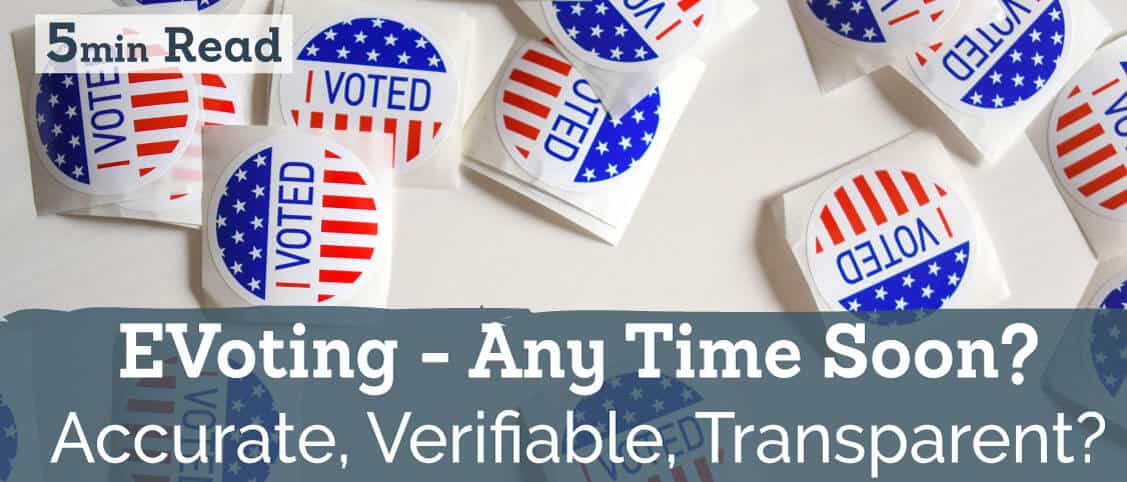How to eVote – A more accurate election?

Published:
Advancement of eVoting – A more credible election?
It’s no surprise that with politics becoming more and more complex in recent years, elections have become all the more important.
Across the world we’ve seen new superpowers taking control in a way we’ve never seen before, meaning that a lot of hope rests on the elections to change or keep these powers. Not to mention the 2020 US Election we’re seeing unfold at the time of writing.
There are some things that can go wrong with the voting process. Obviously, as with all human processed counting, there’ll be some margin for error. Votes, being in the physical nature they are, can go missing, no matter how diligent the team of volunteers are.
So, the question has been posed for years and years, ‘what about electronic voting?’. This would arguably eliminate problems like human error and any actual fraudulent attempts of skewing the results.
Yet, voting is still a few steps behind the times.
What does electronic voting look like?
There are a few different methods being implemented as we speak, and others that are still in development. The most popular method that’s talked about by tech pros, is the semi-electronic voting system.
So, this is still inherently the same for the voters as they would still be signing on a paper form, and not a computer or tablet. But it’s the counting and verifying that’s done by software.
It works like this: The voter enters the polling booth picking up a random form. The form has all the candidates listed in a random order which is different on every form. The voter makes their mark to select a candidate and tears the form down the middle on a perforated line. This separates the names of the candidates from the mark the voter made.
But how will anyone know who they voted for? Well, this is the clever part. The side of the form that’s handed to the polling station volunteer, has a unique QR code at the top. This is then run through a scanning machine that matches the tick box to the correct candidate and electronically counts it.
In this way the vote can be 100% verified by the voter themselves via an online service that clearly shows only the voter themselves who they voted for and if it has been counted.
There are many other fully electronic systems to processes evotes, they usually use an online secure portal to count and verify votes. Using some form of national ID voters log on and vote online, the vote is encrypted for security using bespoke software. Estonia is already implementing this form of evoting, so see Estonia’s method below.
Who’s using eVoting already?
eVoting has been trialled by a few countries already including Switzerland, Estonia the US and even some cases in the UK during the 2019 local elections.
Gerlach and Gasser’s Swiss tests in both Geneva and Zurich rose the turn out for the election in 2009 to 56.4% with 21.8% of voters using the new e-voting tech.
Estonia has successfully implemented a mass evote system via a secure online portal. Voters log on with their national ID card and then receive their downloadable ballot. The software uses blockchain technology to ensure the votes are kept secret.
In the US electronic voting is in high demand with some ex-pat US voters even suing for access to electronic voting. When you consider the low turnout for the 2016 US election, just under 60% of Americans voting, casting e-Votes could solve a massive issue for many.
Why won’t we see large-scale eVote systems any time soon?
Despite all this great evidence, there’s still not enough solid proof that evote software can be 1. impactful enough on voter turnout and 2. Whether eVoting is secure enough to battle hackers who would inevitably try to compromise the system.
I think with time, we’ll see more and more tests across the world and further advancements of security for voters. With the need made ever clearer by the pandemic, voting would be made easier and safer for those at risk.
Forbes sums up:
“People are bound to feel uncomfortable lining up to vote in person in the middle of a global pandemic. Voters face a choice: Go to the polls to vote but potentially expose themselves to the virus, or stay home and miss out on voting altogether. And if people are forced to make this decision, the country could see a lower voter turnout than usual.”
If you want to learn more about this kind of voting, David Bismark explains how the system works.

